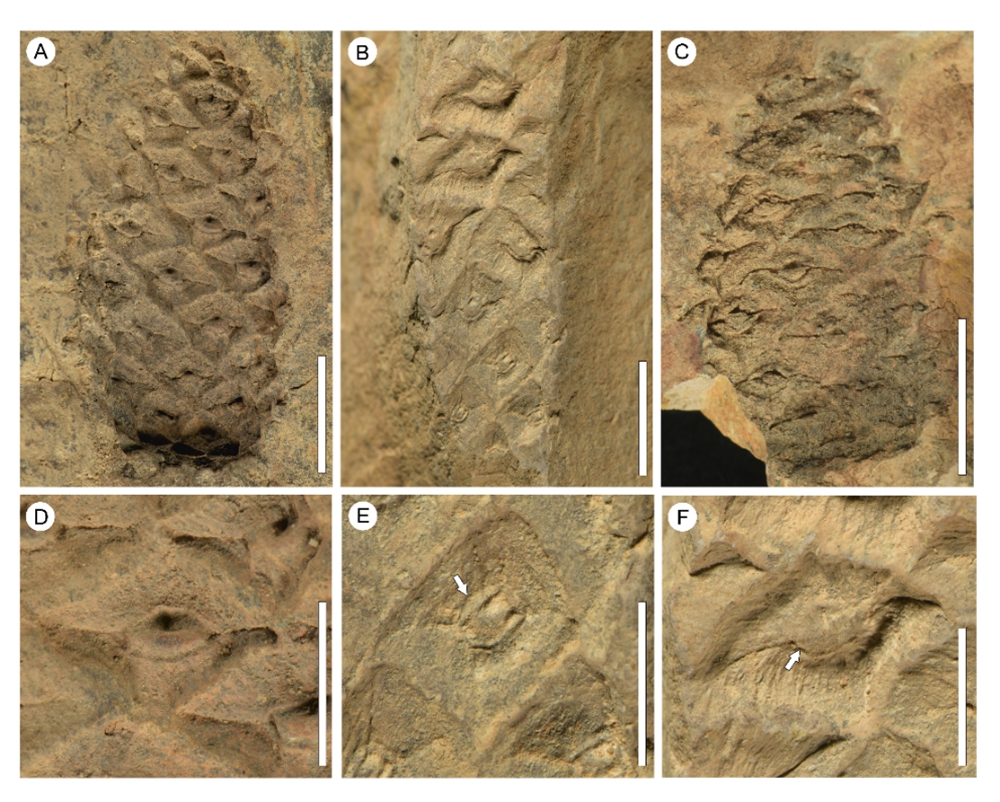The genus Pinus, with over 100 species of evergreen conifers of the pine family (Pinaceae), is distributed throughout the world. However, the biogeographic history at section and subsection level for this genus remains unclear.
Together with their collaborators, researchers from Xishuangbanna Tropical Botanical Garden (XTBG) of the Chinese Academy of Sciences reported a new Pinus fossil species, Pinus mangkangensis from the upper Lawula Formation of Xizang. The fossil discovery provided important evidence for elucidating the biogeographic history and diversification of subsection Pinus in Southwest China.
The female fossil cones were collected from Kajun village, Mangkang County, southeastern Xizang, Southwest China. By morphological comparison between fossil and extant species, the cone type was identified as a new species in subsection Pinus, namely Pinus mangkangensis. The result was published in Palaeoworld.
The female fossil cones are impressions and are conical�ovoid in shape.The female cones are ovoid‑conical, closed and symmetrical, with about 60–70
cone scales helically arranged in 7–9 rows (one side). The Apophyses are widely rhomboidal, slightly swollen with a visible transverse keel and weak longitudinal ridges. Some basal apophyses are vallate. Umbos are dorsal, sunken, perexcentromucronate.The mucro is blunt and rounded.
Pinus mangkangensis is morphologically similar to the living species P. yunnanensis, which is distributed in Southwest China adjacent to the fossil site.
The discovery of P. mangkangensis indicated the existence of the southern lineages within the section Pinus and supported the dispersal of pines to lower latitude regions during the Eocene.
Furthermore, it provided crucial clues for understanding the diversification of extant species within subsection Pinus in Southwest China that have been driven by changes in the monsoonal climate since the Miocene.

Contact
LI Shufeng Ph.D Principal Investigator
Key Laboratory of Tropical Forest Ecology, Xishuangbanna Tropical Botanical Garden, Chinese Academy of Sciences, Mengla, Yunnan 666303, China
E-mail: lisf@xtbg.org.cn
Published: 17 March 2025

